Lalibela: Rock-hewn Churches, part 1
Jochen, Jess and I climbed the surprisingly steep hill toward Lalibela's northern cluster of rock-hewn churches, muttering that we'd thought we had finished trekking. At 100 birr each, we wouldn't normally have bothered with a guide, but our trust in Mulay led us to hire his buddy Girma. Girma guided Jodie the day before the TESFA trek, and made no bones about his massive crush on her; she laughed it off, but we all shifted uncomfortably in our seats when he brought her a Christmas gift during lunch at Roha Café.
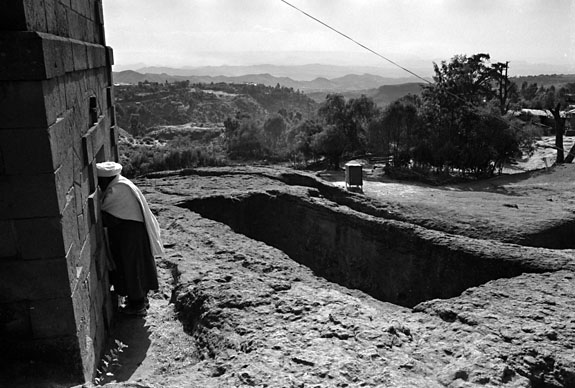
Priest...not sure what kind of room he was unlocking here.
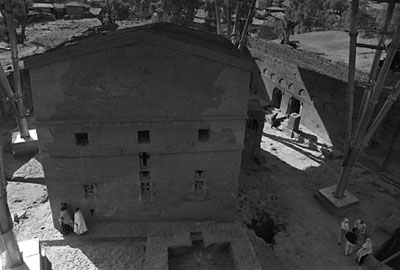 |
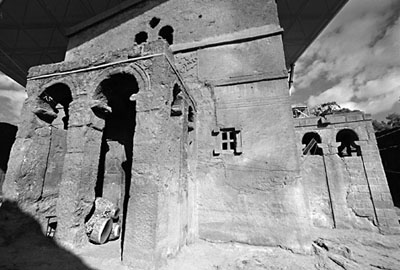 Bet Maryam |
The cluster is different than I expected, each church just a few meters from the next. How do people decide which church to patronize? A bit worn down from five days of trekking, I had difficulty maintaining focus on Girma; while he prattled about each church's ancient history, I wondered more about the current pilgrims, climbing up the steep paths to the churches from the grassy landscape below.
Massive Bet Medhane Alem is completely free-standing; a simply designed cathedral sitting in a wide courtyard. After this it got more adventurous: narrow dark tunnels connecting churches where friendly priests held gorgeously intricate Lalibela-style crosses, often wearing sunglasses to protect from the glare of the tourists' flashing cameras.
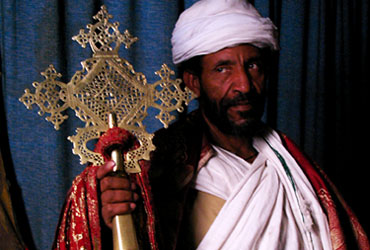 | 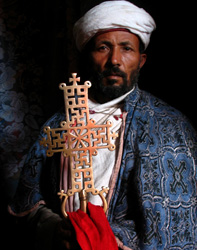 Priests in the northwest cluster. |
For my tastes, Bet Maryam was the more impressive of the northwest cluster; although being banned from the dungeon-like males-only Bet Golgotha means I don't have a complete sample set. Supposedly Bet Maryam is the most popular among Ethiopians, but I mostly noticed that it was popular with tourists. The beauty of the northwest cluster is somewhat diminished by the ugly protective scaffolding, but the sight of elderly pilgrims kissing the various churches' outer walls improved the experience.